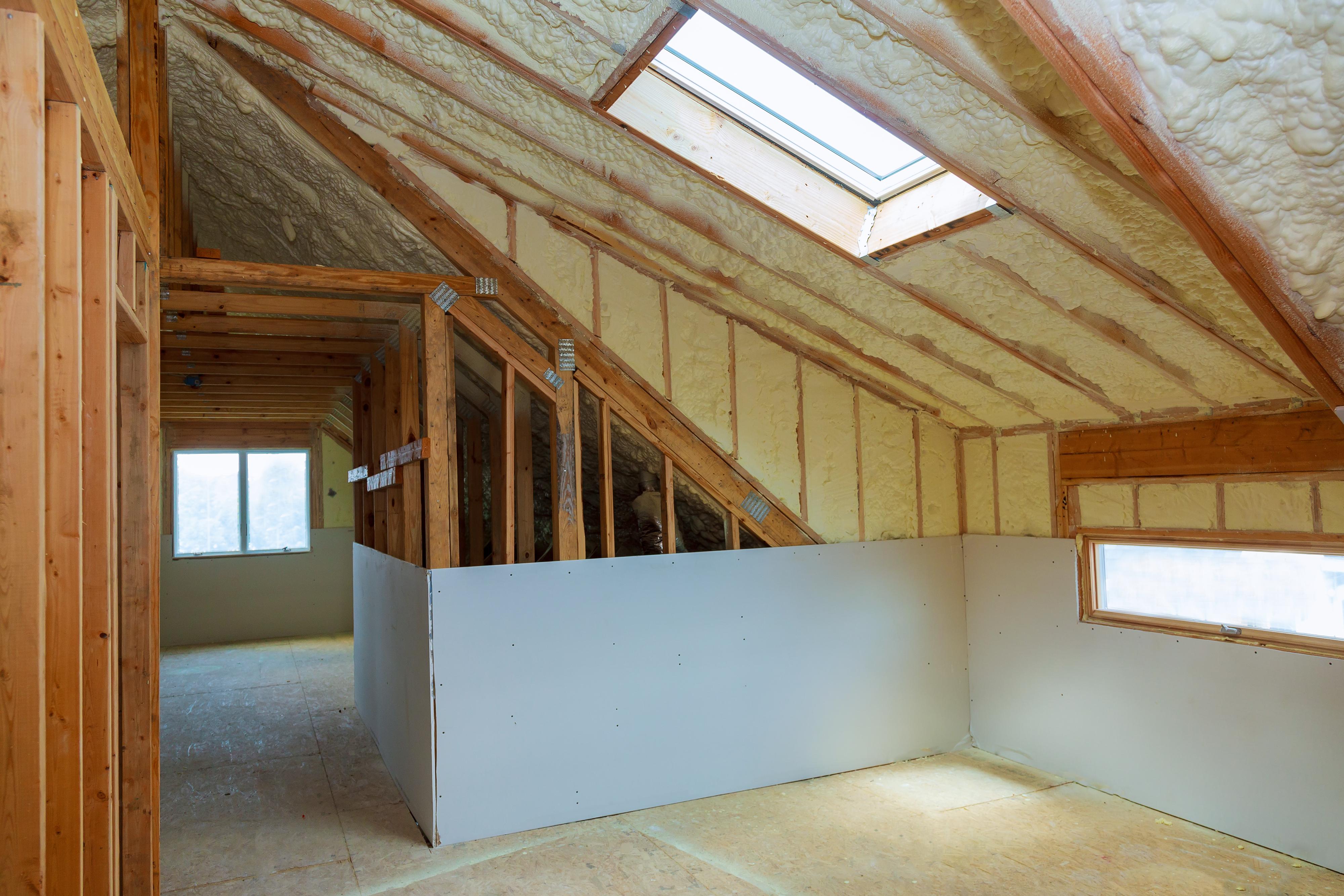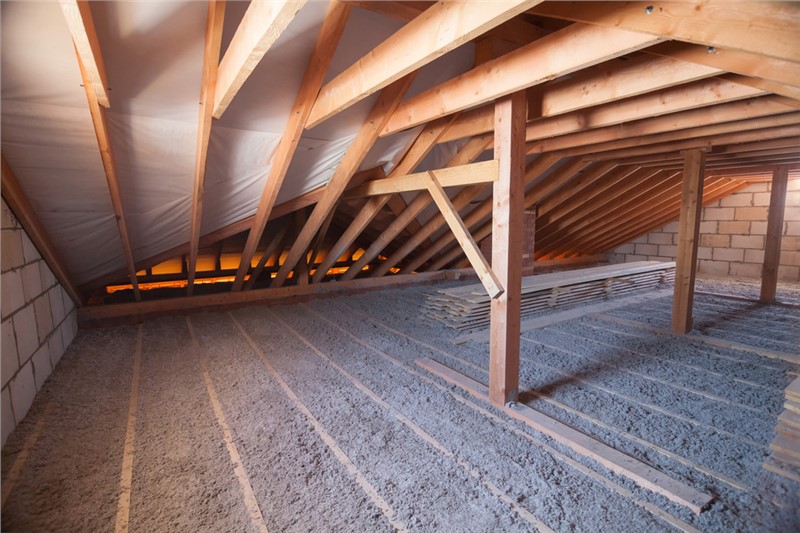Why Attic Insulation DFW is Essential for Energy Performance in Dallas-Fort Worth
Why Attic Insulation DFW is Essential for Energy Performance in Dallas-Fort Worth
Blog Article
Discover the Various Types of Attic Insulation and Their Unique Advantages for Your Home's Energy Efficiency

Fiberglass Insulation
Fiberglass insulation is one of one of the most commonly utilized materials for attic insulation due to its superb thermal performance and cost-effectiveness. Made up of tiny glass fibers, this material properly catches air, creating a protecting obstacle that helps keep consistent interior temperatures. Its high R-value per inch makes it especially efficient at standing up to warmth transfer, which is important for energy preservation in homes.
Installation of fiberglass insulation is fairly simple, often offered in batts or loose-fill types, suiting numerous attic room configurations. Furthermore, it is non-combustible and immune to dampness, reducing the danger of mold advancement. This durability contributes to its durability, making fiberglass a feasible long-term investment for house owners.
Additionally, fiberglass insulation is typically produced from recycled products, which improves its eco-friendliness. The material can also add to soundproofing, minimizing noise transfer between spaces. While it is necessary to put on protective equipment during installation to avoid inflammation from the fibers, the total advantages of fiberglass insulation, consisting of energy cost savings and environmental considerations, make it a popular choice for improving attic room performance and promoting a comfy living setting.
Spray Foam Insulation
Spray foam insulation is a highly efficient option for attic insulation, known for its superior air securing and thermal efficiency. This innovative insulation material is made up of a combination of isocyanate and polyol material, which, when integrated, broadens swiftly to load spaces and dental caries in the attic room space. Its ability to abide by numerous surfaces makes certain a constant obstacle against air leakages, dramatically decreasing heat loss throughout chillier months and heat gain throughout warmer periods.
One of the vital benefits of spray foam insulation is its high R-value per inch, which means it provides superb thermal resistance in a fairly slim application. This is especially helpful in attic rooms where area is frequently limited. In addition, spray foam can assist decrease wetness accumulation, lowering the danger of mold and mildew growth, which can be destructive to both the structure and interior air quality.
While the preliminary cost of spray foam insulation may be greater than conventional options, its lasting energy savings, combined with boosted comfort and boosted home worth, make it a rewarding investment for property owners looking for enhanced power performance. Attic Insulation DFW. In general, spray foam insulation attracts attention as an effective remedy for optimizing attic insulation
Cellulose Insulation

Cellulose insulation is a popular selection for attic room insulation, largely made up of recycled paper items treated with fire resistants. This eco-friendly choice is known for its excellent thermal efficiency, successfully lowering warmth transfer in both summer season and cold weather. The thick structure of cellulose enables it to fill voids and voids in attic room areas, offering a smooth barrier versus air leakages.
One of the substantial benefits of cellulose insulation is its capability to withstand mold and mildew and insects, owing to the fire resistant treatments made use of throughout manufacturing. In addition, it boasts a high R-value per inch, which equates into superior energy performance. Property owners can expect reduced heating and air conditioning prices as a result of improved insulation.
Setup is generally completed with blowing loosened cellulose into the preferred location, enabling a reliable and quick process. This method additionally minimizes interruption to the existing structure. Cellulose insulation has a reasonably low ecological impact, as its manufacturing process uses recycled materials, contributing to lasting structure techniques.
Rock Woollen Insulation
Amongst the various options for attic room insulation, rock woollen, additionally understood as mineral woollen, stands apart because of its impressive thermal and acoustic performance. Made from all-natural or recycled products, rock wool is developed by thawing rock and spinning it into fibers, resulting in an item that offers exceptional insulation residential properties.
Among the substantial advantages of rock woollen insulation is its high R-value, which shows its performance in standing up to warm circulation. This particular not just enhances power effectiveness however likewise adds to maintaining a comfortable interior temperature level year-round. Additionally, rock wool is inherently fire-resistant, making it a more secure option for homes as it can hold up against heats without melting or launching toxic fumes.
Furthermore, rock wool insulation succeeds in soundproofing abilities, effectively website link decreasing noise transmission in between spaces and from outdoors sources. This makes it an optimal option for property owners seeking a relaxed living atmosphere. Moreover, rock woollen is moisture-resistant, aiding to stop mold and mildew growth and keeping the architectural honesty of the attic room area. In general, rock wool insulation gives a thorough option for enhancing power efficiency, security, and comfort in property settings.
Glowing Obstacle Insulation
Glowing barrier insulation serves as an efficient solution for lessening warm transfer in attics, especially in warmer environments. This sort of insulation works by reflecting convected heat far from living spaces, thus lowering the amount of heat that goes into a home throughout heat - Attic Insulation DFW. Normally composed of a highly reflective product, such as aluminum foil, radiant barriers are mounted in attic rooms, facing the roofing system, where they can intercept inbound warmth from the sunlight
The key advantage of glowing barrier insulation is its ability to lower cooling prices. By showing warm instead of absorbing it, radiant barriers can assist preserve a much more steady indoor temperature, minimizing the workload on a/c systems. This effectiveness translates into reduced energy bills and increased convenience for house owners.
Along with power savings, radiant obstacles can additionally add to boosted indoor air high quality. By minimizing warmth buildup, they help decrease moisture degrees, which can avoid mold growth and enhance total air blood circulation. When mounted correctly, glowing barrier insulation can be a very useful addition to any energy-efficient home, making it a worthy factor to consider for home owners aiming to boost their attic room insulation method.
Conclusion
In conclusion, recognizing the various types Click Here of attic room insulation-- fiberglass, spray foam, cellulose, rock woollen, and radiant barriers-- makes it possible for property owners to make informed choices regarding energy performance. By selecting the proper insulation material, considerable decreases in energy costs can be achieved, along with improvements in interior comfort.

In conclusion, recognizing the various types of attic room insulation-- fiberglass, spray foam, cellulose, rock wool, and glowing obstacles-- makes it possible for house owners to make educated choices concerning energy effectiveness.
Report this page